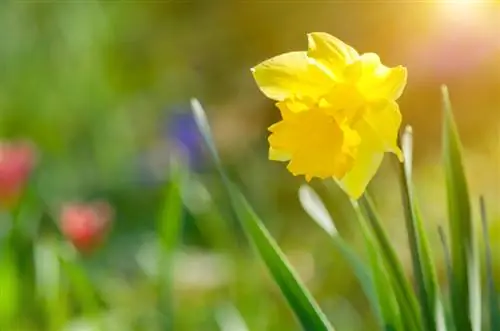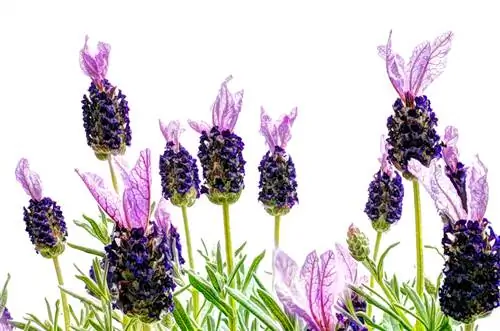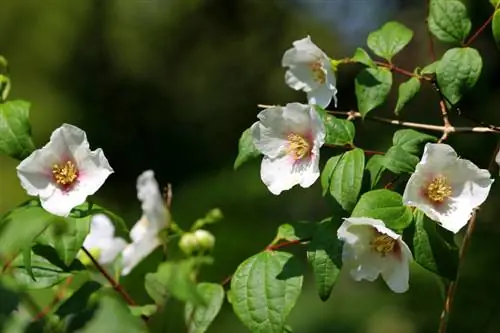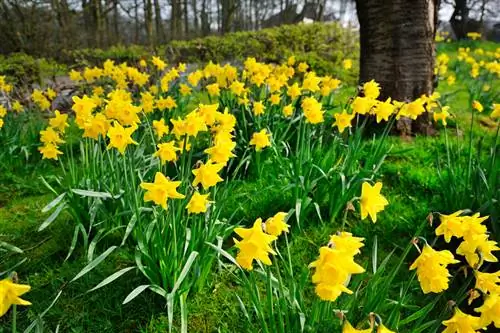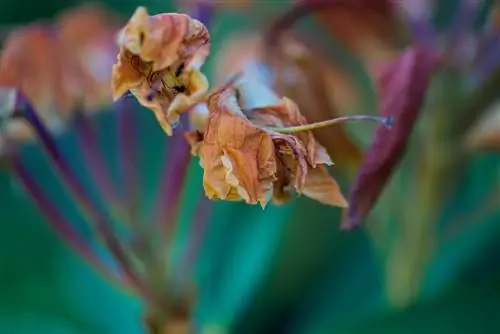- Author admin [email protected].
- Public 2023-12-16 16:46.
- Last modified 2025-01-23 11:20.
The daffodil is one of the first splashes of color of a young season in many gardens and parks. This type of daffodil has bright yellow flowers and can multiply into extensive populations after planting in a suitable location with little care.
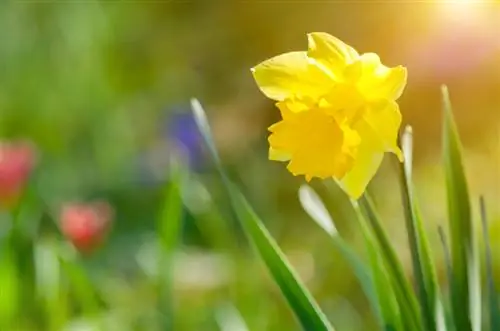
What are the properties of the daffodil?
The daffodil (Narcissus pseudonarcissus) is a hardy, perennial ornamental plant from Central Europe and North Africa that bears light yellow flowers from March to April. It reaches a height of 35 to 40 cm and reproduces through seeds and bulbs. Be careful: the plant is poisonous!
Daffodil profile
- Botanical name: Narcissus pseudonarcissus
- Area of origin: Central Europe and North Africa
- Use: ornamental plant in the garden, cut flower
- Growth height: about 35 to 40 centimeters
- Shape and color of the leaves: 4 - 6 basal and lanceolate leaves with blunt ends and blue-green color
- Flower shape: tube of 6 fused petals in front of a crown-shaped, six-pointed flower, hanging nodding on the stem
- Flower color: light yellow
- Flowering time: March to April
- Perennial: Yes, propagated by seeds and bulbs
- Hardy: Onions as perennial organs, fully hardy in the ground
- Poisonous: Yes, highest concentration of poison in the onions - Effect: vomiting, diarrhea, cardiac arrhythmia with fatal consequences
Take care of daffodils properly after flowering
Compared to other plants, it is noticeable that the actual growing season of daffodils is limited to a short period in spring. For most of the year, the bulbs serve as survival organs in the soil. Depending on whether you want seeds to ripen on the plants or not, withered flowers can be removed sooner or later. When it comes to care and pruning measures, which are usually visually motivated, you should remember that the plants use their leaves to store solar energy in the bulbs for flowering the following year. Therefore, the leaves should only be removed after flowering when they have turned yellow.
Caution: Daffodils are poisonous
Actually, with perennial and winter-hardy daffodils, there is rarely a need to dig them up again after planting. But pay attention:
- never store daffodil bulbs next to edible onions due to the risk of confusion
- not to leave onions lying around within reach of children or pets
- not to get plant sap on your skin when cutting daffodils for the vase
The daffodil juice usually does not cause symptoms of poisoning until you wash your hands, but it can cause skin irritation.
Tip
Easter bells are grateful harbingers of spring that can be left largely to their own devices in a suitable location. They are therefore a good alternative to tulips if you want to plant in spring-wet locations or if you want to add color to perennial beds that are often bare in March. Hidden behind other perennials, the leaves of the daffodil are not as disruptive even after they have bloomed, as they are when left free in a meadow.

